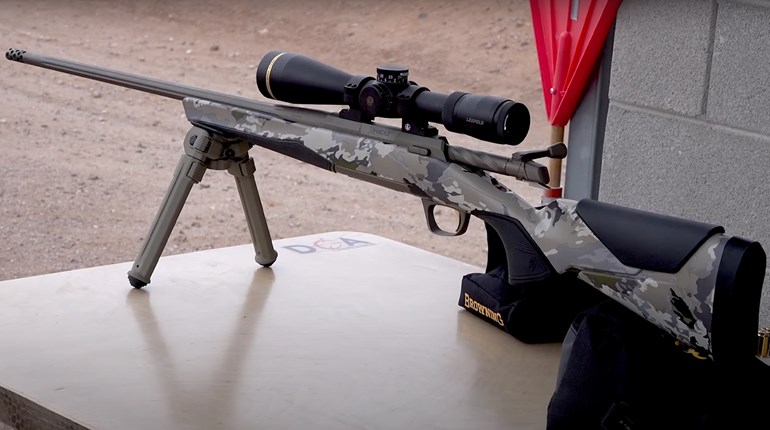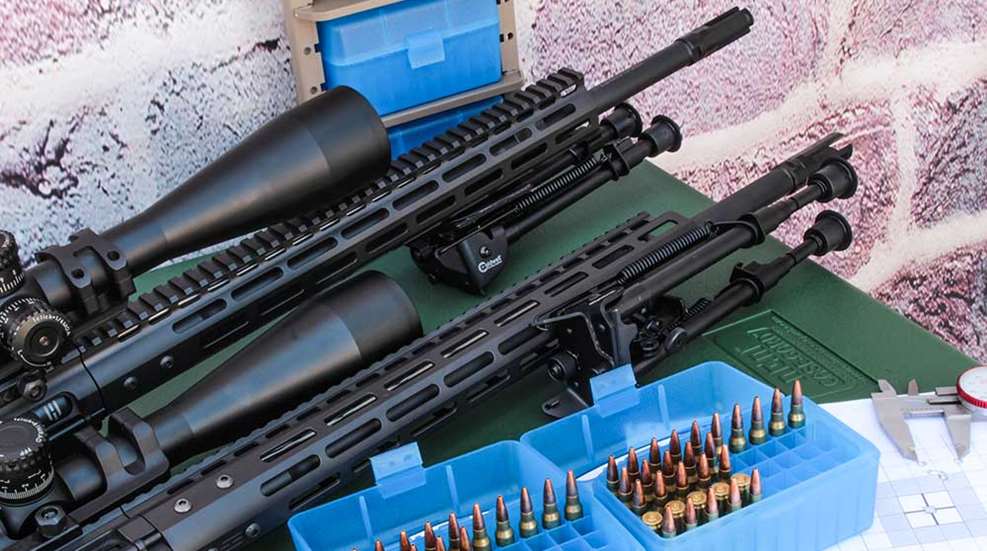
We hear it all the time around the range and always read it on the forums: "Hey I have that same rifle. What's your go-to load?"
I cringe every time I hear it. For starters, you don't have "the same" gun. You have the same model. Even if that gun was the next one off of the line, there will still be subtle differences and, with them, the requirement for different handloads that perform well. Some say this isn't true, and it's fair to note that slight differences in guns aren't always apparent unless the shooter and the firearm are capable of consistent, sub-MOA accuracy. However, with more factory guns capable of this benchmark, this fact becomes more noticeable. After enough claims in our reloading and long range courses at Renaissance Firearms Instruction, I decided it was time to put in the work and produce some definite proof.
The Critical Variable: Barrel Construction
When analyzing the above statement, it is important to understand that, next to the shooter, the most important part of the accuracy equation is the barrel, so we set that as the only variable in this test.
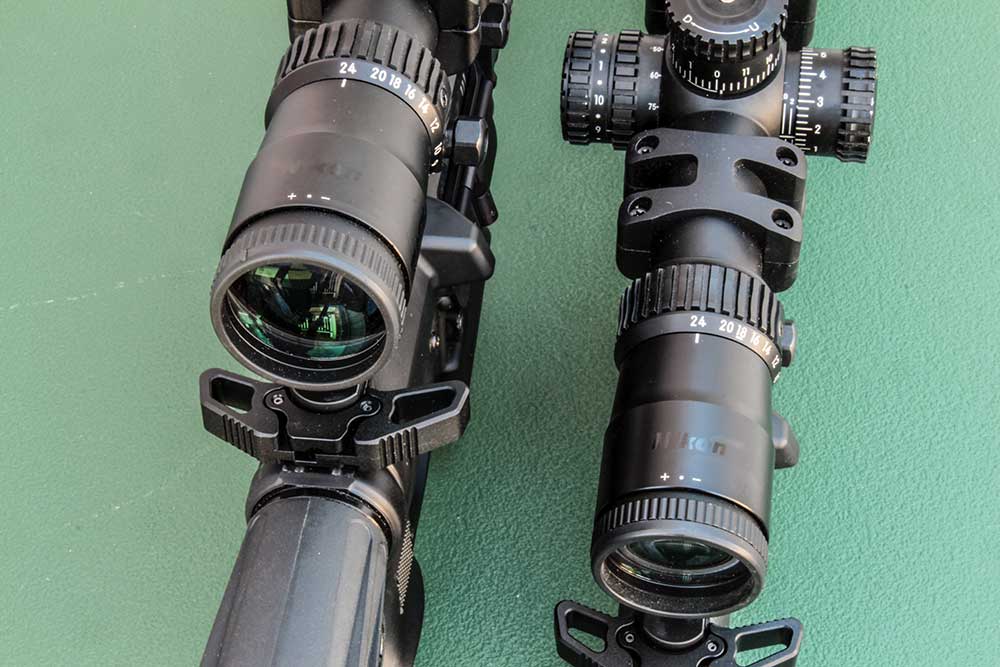
We reached out to Head Down Firearms and had them build us two uppers with barrels that came off the line in sequence. The barrels came courtesy of Tactical Kinetics, which have given us stellar accuracy in the past. The barrels were cut with a 1:9-inch twist in a 20-inch medium profile. We asked the rifle builders to use identical handguards, upper receivers, charging handles, BCGs and muzzle devices. We topped both off with a Nikon 6-24x Black x1000 and attached a Caldwell XLA Pivot Bipod.
To eliminate variables introduced by the lower receiver, we used the same one with each upper. Our lower was built with a TacStar AMRS adjustable stock and a Geissele Super Dynamic 3 Gun Trigger for an effortless break, reducing possible shooter error.
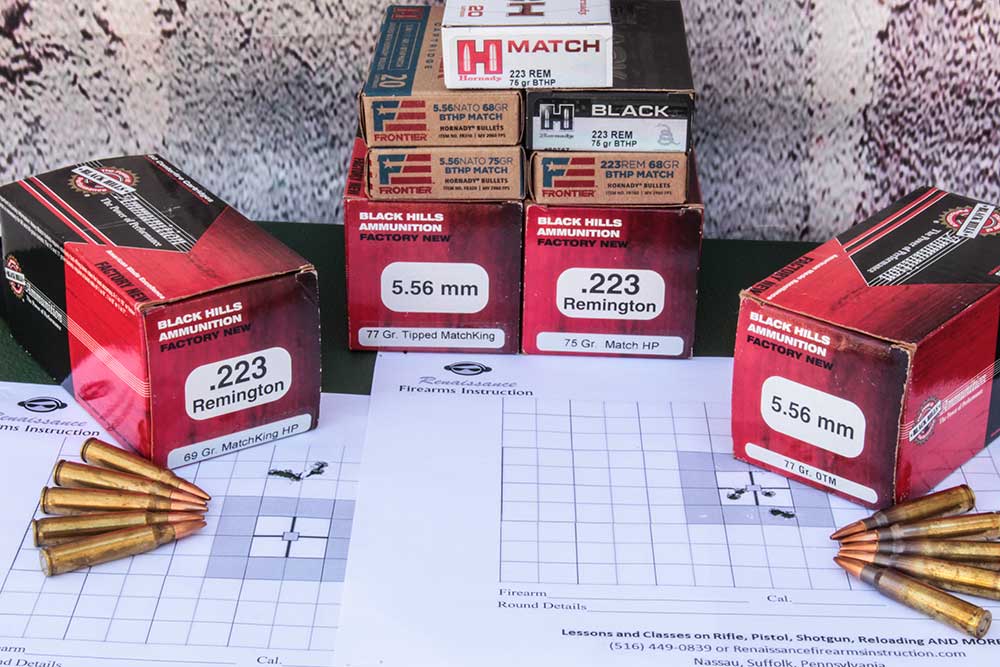
Factory-Produced Control Loads
As with any new firearm, before we get into handloads, we need to establish a baseline for accuracy via factory loadings. We ran quite the variety to include:
- Black Hills 69-grain MatchKing .223
- Black Hills 75-grain Match HP .223
- Black Hills 77-grain OTM 5.56
- Black Hills 77-grain Tipped MatchKing 5.56
- Hornady Frontier 68-grain BTHP Match .223
- Hornady Frontier 68-grain BTHP Match 5.56
- Hornady Frontier 75-grain BTHP Match 5.56
- Hornady BLACK 75-grain BTHP .223
- Hornady MATCH 75-grain BTHP .223

The Black Hills 77-grain OTM was the best round in Upper A, While Black Hills’ 69-grain SMK loading was the best in Upper B, however by only little more than 1/8th MOA. This is testimony to my secondary claim of "the package has to produce consistent sub-MOA results" for it to be noticeable.
With that, it was onto building a sub-MOA handload. If we wanted to stay inside of 500 yards, a 69-grain bullet would be a no-brainer. However, we eventually wanted to stretch out further with a bullet that will buck the wind better, so we decided to build a handload based on a Hornady 75-grain BTHP bullet using Varget powder. I chose this set of components largely because I have yet to find an AR-15 that wouldn't group sub-MOA with them somewhere in the powder spectrum.
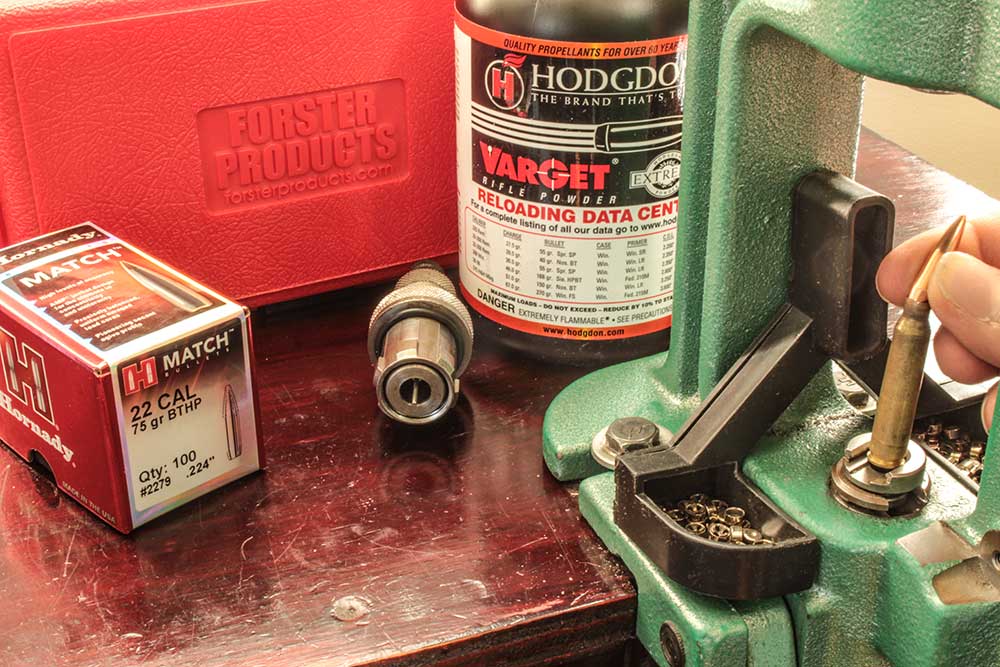
To further reduce variables we made sure that:
- Bullets came from the same box
- Powder came from the same bottle
- Primers came from the same pack
All brass was once-fired 2004 production Lake City, trimmed to the same length and weighed in at 92 grains. All these cases were fired from the same M4 on the same day (I picked it up while it was still hot). As an aside, this is probably why the Air National Guard doesn't let me hang out during quals anymore.
All rounds were loaded using Forster dies, because I personally have confirmed the consistency and precision of this particular set over several thousand rounds.
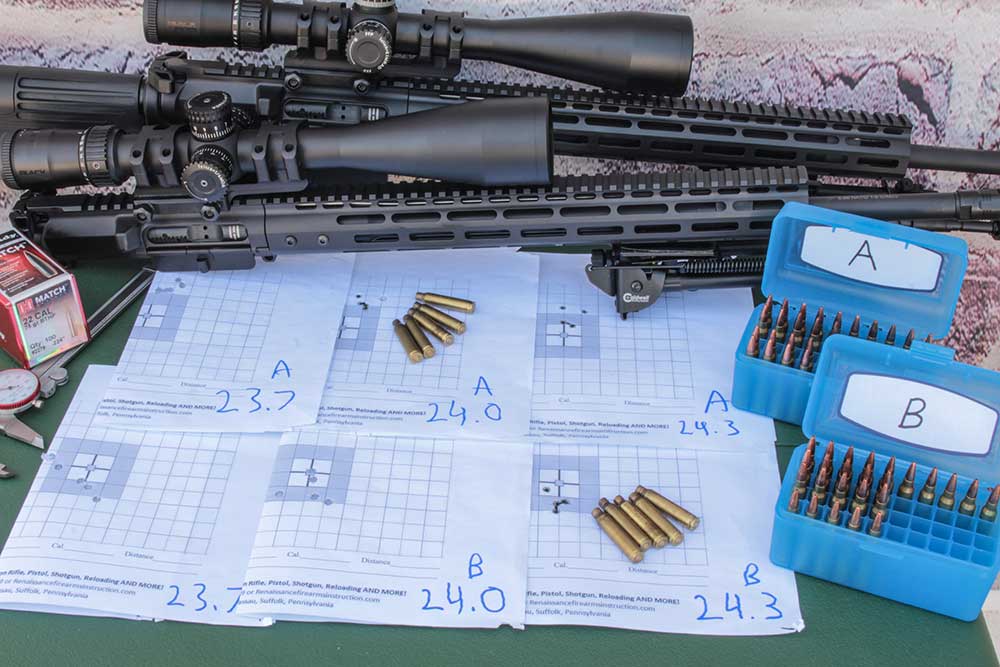
We built loads across the entire spectrum in .3 grain increments and fired groups of five shots of each powder charge weight in each rifle. Both rifles had predictable results as groups started to shrink until they reached their smallest and then gradually opened up. However, the key piece of evidence is that each upper receiver began to open up at different points during load-testing. To confirm, we ran the test a second time and got identical results.
Even though we like to believe guns are built with an almost digital-like consistency, the truth is that there are always going to be slight differences. As guns are built, the tools involved change slightly with each operation. Every cut, grind, polish and turn degrades them. This, in turn, changes the final product just a hair. Even high-end guns, like the Head Down Arms upper receivers tested, will have these subtle differences.
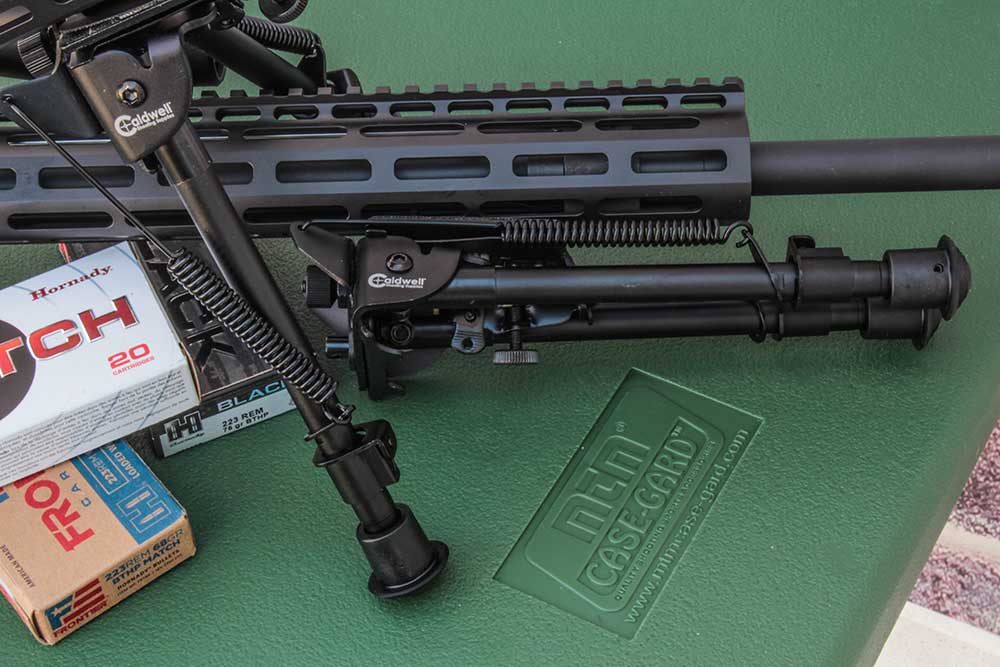
This is also one of the largest contributors to overall quality and its associated price. If brand X changes their tool heads twice as often as brand Y then they will produce a product that is twice as consistent. Of course somebody needs to pay for all that retooling, so this gets factored into the final price. This is a large part of what makes a high-end, higher priced AR-15 provide more-consistent performance across all models than a rack-grade, budget-priced, mil-spec range banger.
There are no shortcuts in life. Your buddy's load doesn't matter; you'd only be selling yourself short. Finding the best load in your particular gun and getting the best-possible performance out of your personal firearm will always entail loading some rounds and testing them yourself. Besides, is an extra day on the range really that awful?












